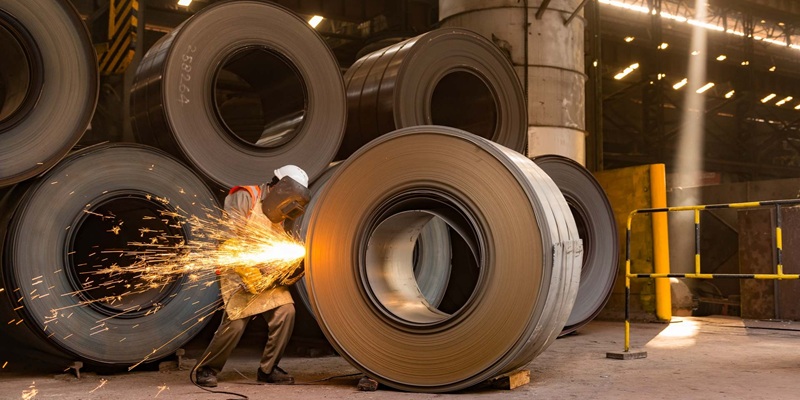Schedule a Call Back
Intertec launches breakthrough nanotechnology antistatic coating
 Industry News
Industry News- May 18,17

May 2017 – The field equipment protection specialist Intertec has launched a revolutionary advance in antistatic surface coating treatment for its GRP (glassfibre reinforced polyester) outdoor enclosures. Developed specially for Intertec by the chemical specialist BUFA, the new nanotechnology-based coating also boosts protection against damage from ultraviolet radiation - helping to achieve extended maintenance-free lifecycles of field-based control and instrumentation equipment in processing industries such as oil, gas, chemicals and petrochemicals. Intertec's weathering tests in an environmental test chamber have demonstrated that the new coating can withstand extended exposure to very high UV levels - providing a superb new level of protection particularly for GRP field enclosures destined for environments such as deserts, the tropics or the Arctic.
Dubbed GO-Antistatic, the new treatment is based on an advanced carbon nanotube material that is applied as part of a surface gelcoat. Polyester gelcoats are widely used to add glossy and highly durable surface finishes to the exterior of GRP enclosures. The advanced nanomaterial provides a degree of conductivity for the outdoor enclosure that dissipates any static electric charges safely to ground - to protect against sparking. Such treatments ensure safety in hazardous areas of processing plants, where a spark caused by the build up of an electrostatic charge can cause an explosion of gas, vapour or dust in the local atmosphere.
Gelcoats are a premium form of protection, and form a chemical bond on the surface of the GRP. Most of the antistatic treatments applied to GRP enclosures today rely on the addition of conductive materials into the surface gelcoat (or conductive paint) by employing carbon/graphite, tin or other metals. However, if the gelcoat contains antistatic material, this can have a detrimental effect on its performance, notably in terms of reducing its smoothness and ultraviolet protection, and limiting the colouring possibilities. Extended exposure to high UV levels can then damage GRP enclosures, leading to minor surface roughening - which is sometimes referred to as chalking or frosting.
To minimise such adverse effects, Intertec introduced a proprietary antistatic treatment some 30 years ago - and this has been a factor in Intertec's leadership position in the outdoor GRP enclosure market today. The new-generation nanomaterial treatment extends Intertec's technological lead over other enclosure competitors once again, offering no-compromise, long-lifecycle protection for hazardous area enclosures.
Intertec and BUFA worked together to develop the new antistatic coating. BUFA chose single-wall carbon nanotubes (SWCNTs) to provide the required conductivity and has developed proprietary techniques to disperse the SWCNTs in the coating material. This approach provides numerous benefits largely because SWCNTs are incredibly small - around 1-2 nanometres in diameter - which increases smoothness at the surface level of the coating. The gloss retention (smoothness) after accelerated weathering tests is about 50 per cent better than the previous formulation, and is on the same level as non-antistatic gelcoats. This significantly improves UV resistance, and additionally virtually eliminates any effect on the use of any decorative colourings.
This latter advantage means that Intertec can also now provide hazardous area enclosures in a much broader range of colours than was previously possible. Options will include almost pure white for example - which will further aid solar protection - something that is very difficult or impossible to achieve with many current antistatic treatments. Intertec can also now provide enclosures in colours that match a client's corporate branding for instance, or help with other desirable attributes such as camouflage or blending with architecture.
As part of the development process Intertec provided BUFA with feedback on application and curing processes. Intertec also subjected example enclosures treated with GO-Antistatic to weathering tests using the resources of an advanced environmental chamber that is normally employed for testing new automobile designs.
"Our core business is providing advanced enclosures to ensure the long-term protection of sensitive field equipment, and the new antistatic treatment represents a significant step forward in enhancing performance," says Intertec's CEO Martin Hess. "The development could not have come at a better moment - as today many of our EPC and processing operator customers are trying to build plants in ever more remote and harsh environments."
"This surface protection treatment greatly boosts the long term performance of an important and popular form of coating for industrial applications," adds Krzysztof Bargiel, Product Development director of BUFA. "It additionally enhances other qualities of the surface coating including application and colour tinting - which we believe will be a breakthrough advantage for the outdoor enclosure industry."
Related Stories

Jindal Stainless unveils pioneering supply chain digitalisation project
Project Pragati, in collaboration with Dassault Systèmes and Capgemini, will streamline operations from casting to finishing at Jindal Stainless’ Hisar manufacturing unit, improving productivity ..
Read more
Analysing India’s clean energy goals: Kumar Shivam
India's clean energy ambitions are among the most aggressive globally and success in this arena is not only crucial for the country’s own sustainable development but also pivotal for global climat..
Read more
India eyes $3 trillion industrial opportunity by 2035
Omniscience Capital emphasised that higher domestic consumption—fuelled by rising per capita income—and India’s target of $1 trillion in merchandise exports by 2030 will be major growth driver..
Read more










